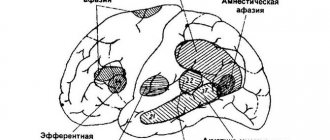How does fatigue manifest itself?
Sometimes the word “fatigue” is used as a synonym for the term “fatigue.” However, these definitions are not equivalent, since fatigue is only a subjective sensation that manifests fatigue.
Physical and mental ( mental ) fatigue is determined . Mental fatigue is expressed, first of all, by a decrease in the productivity of intellectual efforts and dissipation of attention. With physical fatigue, muscle function is impaired.
Doctors determine subjective and objective signs of fatigue. The earliest sign is a feeling of fatigue and a desire to sleep. Physical fatigue of varying degrees is expressed in adults and children by a decrease in muscle endurance and strength, impaired coordination of movements. To perform certain actions, a person who has symptoms of body overwork needs to expend much more energy.
The initial signs of overwork in the body during mental work are expressed by problems with memory, the inability to quickly process information, concentrate on solving the main issues, etc. The causes of overwork in this case are associated with prolonged and active mental work, as, for example, this happens to students before an exam. The main physiological causes of physical fatigue are overstrain of the body. For example, such a condition can occur in an athlete, in a driver after a long flight, etc. In some cases, after very heavy exertion, both physical and mental forms of fatigue are simultaneously observed.
Fatigue can also be associated with the specifics of work: it occurs more quickly if a person works monotonously, in the same position, and at the same time the same muscles tense. Due to a false sense of comfort, external signs of fatigue may appear later after working in a static position.
If a person regularly experiences a state of overfatigue and prevents him from leading a full life and actively working, you should definitely go to see a doctor and ask him to explain what the causes of fatigue are in your case, and what needs to be done to get rid of this condition.
With inadequate rest or with constant very heavy loads, chronic physical and nervous fatigue occurs. Experts also tend to distinguish between mental and mental fatigue of a person. In young people, constant mental reboots and a state of fatigue provoke the development of neuroses . Very often this is how schoolchildren’s fatigue is expressed. Those who are prone to constant emotional unrest and anxiety experience mental fatigue.
Given the fact that performance and fatigue are closely related, you should definitely pay attention to the signs of this condition and take the necessary measures. If you often experience rapid fatigue, and recovery does not occur even after rest, you should consult a specialist.
Parents must have a clear understanding of fatigue and overwork in children, so as not to miss the first degree of overfatigue and try to help the child. In preschoolers and elementary school students, severe fatigue develops faster than in an adult. This condition sometimes occurs simply as a result of sitting at a desk for many hours, too much daily stress, etc. Chronic fatigue in children is expressed by a number of signs. The child becomes distracted, inattentive, loses perseverance, and breaks discipline during lessons. In some cases, the child may even develop a fever from overwork, weakness, headaches, and weakness. Very often, additional treatment for fatigue is required for children who have recently acquired any illness. But it should be taken into account that such a condition can also be a harbinger of illness.
Why does fatigue occur?
Thus, the main causes of overwork are serious physical, mental and emotional stress, poor nutrition, lack of sleep and proper rest, difficulty adapting to certain conditions, physical inactivity , etc.
Fatigue occurs in a person due to prolonged or too strenuous activity. Fatigue during work manifests itself as a result of different types of activity: the body becomes overtired both during static work and during dynamic work. Physical fatigue develops during muscular work, mental fatigue develops during active intellectual activity. Monotonous activity and monotony of actions lead to overwork. A person has a desire to leave work or reduce the degree of workload. During muscular loads, a person becomes overtired, since the supply of energy substances in his muscles decreases and at the same time, decay products accumulate. Accordingly, rest allows you to get rid of lactic acid (a breakdown product) and restore normal function of skeletal muscle and other muscles. Normal condition and muscle work occurs faster with active rest.
If a state of fatigue constantly haunts a person, with the question “explain what are the causes of muscle fatigue,” you should definitely consult a doctor. The specialist will conduct a preliminary examination, which will determine that constant fatigue is associated with a specific reason. In addition, the doctor will tell you how to prevent overwork in the future.
The causes of fatigue of a neuropsychic nature can be prolonged mental work, poor working conditions, emotional overload, noise, and physical illness. If a person continues to work in a state of overwork, then gradually he develops exhaustion , which can be either acute or chronic. Often, exhaustion of both forms is observed in athletes who are actively preparing for competitions.
It is important to understand that fatigue can be a symptom of serious diseases - diabetes , hepatitis C , cancer , depression , multiple sclerosis , tuberculosis , etc. Therefore, it is extremely important to undergo a full examination and determine whether the person’s health is normal. During the consultation, the doctor must pay attention to both some subjective indicators (fatigue, general discomfort) and objective signs (weight loss, increased heart rate, fluctuations in blood pressure)
Determination of the state of fatigue[edit | edit code]
Fatigue
is a condition that occurs as a result of intense or prolonged work and is accompanied by a decrease in physical performance. It is not the result of exhaustion of the body, but a signal about the possibility of significant biochemical and functional changes, as a result of which performance is automatically reduced and excessive changes are prevented.
Depending on the predominance of the content of the work - mental
or
physical
- we are talking about mental or physical fatigue. There are also acute and chronic, general and local, latent (compensated) and obvious (not compensated) fatigue (Wtmore, Costtle, 2003; Gordon, 1999; Key factors of adaptation..., 1996; Mishchenko V. S., 1990; Monogarov, 1986 ; Platonov, Bulatova, 1995; Viru, 1995).
Acute fatigue
occurs during relatively short-term work, when its intensity does not correspond to the level of physical fitness. It manifests itself in a sharp decrease in cardiac productivity (heart failure), disruption of regulatory influences on the part of the central nervous system and endocrine system, increased sweating, and disruption of water-salt balance.
Chronic fatigue
is the result of failure to recover from work. The ability to learn new motor skills is lost, performance, natural resistance to diseases, appetite are reduced, sleep is disturbed, etc.
General fatigue
(large muscle groups are involved) is associated with a violation of regulatory functions on the part of the central nervous system, coordination of motor and regulatory functions. General fatigue is accompanied by a disorder of autonomic functions: an increase in heart rate that is inadequate to the load, a drop in blood pressure, and a decrease in PV. Subjectively, it is felt as a sharp exhaustion, increased heartbeat, and the inability to continue working.
Local fatigue
(load of individual muscle groups) is associated not so much with the central control apparatus, but with local structural elements of movement regulation: motor nerve terminals, neuromuscular synapses. The amount of acetylcholine in the presynaptic membrane decreases, as a result of which the action potential of the postsynaptic membrane decreases. There is a partial blocking of the efferent signal transmitted to the muscle. The contractile function of the muscle deteriorates.
In the latent (compensated) phase
fatigue, high performance is maintained, supported by volitional efforts.
But the efficiency of work is falling. Its continuation is accompanied by the occurrence of uncompensated (obvious) fatigue
, which is accompanied by a decrease in performance when the functions of internal organs and the musculoskeletal system are suppressed. The function of the adrenal glands is inhibited, the activity of respiratory enzymes decreases, under-oxidized metabolic products accumulate, and reserve alkalinity decreases. If there is a sharp drop in performance, when it is physically impossible to maintain work, the athlete refuses to perform it.
The physical nature of fatigue is complex. Numerous facts indicate that the main process leading to the occurrence of fatigue is the gradual suppression of central nervous system activity and the development of inhibition. It is caused by a violation of the conduction of impulses through synapses. Thus, inhibition that occurs in case of fatigue plays a protective role, protecting nerve cells from exhaustion. The development of fatigue is also facilitated by a lack of oxygen, accumulation of metabolic products, loss of energy resources, etc. Changes in intracellular metabolism reduce the excitability and lability of nerve cells, which leads to the development of inhibition (Whitemore, Costtle, 2003; Sports Medicine. Practical..., 2003).
The onset of fatigue is characterized by a change in the usual pattern of movements. For example, an athlete running at a normal stride length and frequency, if tired, can maintain a high speed for a while by increasing the frequency of steps and decreasing their length. However, this will not last long. As fatigue develops, step frequency and speed inevitably decrease.
During cyclic work of maximum intensity
Of primary importance in the development of fatigue are a decrease in the mobility of nervous processes and the development of inhibition in the nerve centers. This is the result of strong excitation under the influence of the high rhythm and tempo of afferent impulses coming from working muscles. The depletion of phosphagen reserves and the accumulation of lactic acid have a certain significance in the development of fatigue during work of such intensity.
During cycling at submaximal intensity
the physiological causes of fatigue are more diverse: accumulation of lactic acid, gradual inhibition of the activity of nerve centers due to a high pace of work, a sharp lack of oxygen (limit values), depletion of macroergs, etc. (Lactate threshold and ..., 1997; Mohan, Glesson, Gringafor, 2001; Fomin, Vavilov, 1991).
During cyclic work of high intensity
the main cause of fatigue is the relative hypoxia of muscle tissue, as well as the gradual accumulation of lactic acid and its inhibitory effect on aerobic metabolism and the processes of nervous regulation of motor function. The capabilities of the oxygen transport system are a factor limiting performance under conditions of limiting V02, and therefore the body generates part of its energy in the process of anaerobic breakdown of glucose - glycolysis. A certain role in the inhibition of nerve centers during long-distance running is played by the uniform influence on nerve cells of afferent impulses periodically arriving from working muscles.
During cyclical work of moderate intensity
The first place in the development of fatigue comes from the depletion of energy resources - mainly glycogen - in the working muscles and liver. A certain role is played by the occurrence of fatigue under the influence of repeated monotonous irritation of the nerve centers by afferent impulses coming from the muscles. Significant sweating, leading to dehydration, and loss of minerals also contribute to the development of fatigue during moderate work.
The main role in the development of fatigue during acyclic work
plays a change in the functional state of the nerve centers. During sports games, for example, the mobility of nervous processes and the capabilities of the autonomic systems decrease, and blood pressure accumulates. During strength and speed-strength exercises, the mobilization ability of the nerve centers decreases - the ability to develop maximum activity in a short time. With static efforts, the main cause of fatigue is the development of extreme inhibition in the nerve centers under the influence of a powerful flow of afferent impulses coming from tense muscles.
Classification of types of fatigue (Volkov V.M., 1977)
| Kinds | Manifestation of fatigue |
| Mental Sensory | Observed when playing chess, in shooting athletes with intense analyzer function |
| Emotional | Emotions are inseparable companions of sports activities |
| Physical | Occurs as a result of strenuous muscle activity |
Classification of manifestations of fatigue
| Kinds | Manifestation of fatigue | Athlete's condition |
| Lung | A condition that develops even after muscular work of insignificant volume and intensity. | It manifests itself in the form of fatigue. Performance with this form of fatigue, as a rule, does not decrease |
| Acute | A condition that develops during extreme single physical exertion | Weakness is noted, performance and muscle strength sharply decrease, and atypical reactions of the cardiovascular system to functional tests appear. Paleness of the face. Tachycardia. Increase in maximum blood pressure by 40-60 mm Hg. Art., a sharp decrease in minimum blood pressure, ECG shows a disturbance in the metabolic processes of the heart, an increase in general blood leukocytosis, sometimes protein in the urine |
| Overvoltage | An acutely developing condition after performing a single extreme training or competitive load against the background of a reduced functional state of the body | General weakness, lethargy, dizziness, sometimes fainting, poor coordination of movements, palpitations, changes in blood pressure. Heart rhythm disturbances, liver enlargement (painful liver syndrome), atypical reaction of the cardiovascular system to stress. This form lasts from several days to several weeks. |
| Overtraining | A condition that develops in athletes with an incorrectly structured training and rest regime (physical overload, monotony of training means and methods, violation of the principle of gradually increasing loads, insufficient rest, frequent participation in competitions) | Severe neuropsychic changes, deterioration in athletic performance, disruption of the cardiovascular and nervous systems, decreased body resistance to infections |
| Overwork | Pathological condition of the body. It most often manifests itself in the form of neurosis; it is observed, as a rule, in athletes with an unstable nervous system, emotionally impressionable people, and during excessive physical exertion. | The symptoms are similar to those characteristic of overtraining, but more clearly expressed. Athletes are apathetic, they are not interested in the results of participation in competitions, they have disturbed sleep, pain in the heart, indigestion, sexual function, tremors of the fingers |
Determining the state of fatigue while working on a bicycle ergometer at a given pace[edit | edit code]
Equipment
: bicycle ergometer.
Progress
From among the students, one or two subjects are selected (preferably trained cyclists), a recorder of the pace of movements, and two secretaries to keep a record of the results of the experiment.
Each subject, after preliminary instruction, takes turns performing the following types of loads on a bicycle ergometer:
- 2-3 minute work at a low, constant pace (warm-up);
- after 1-1.5 minutes - 10-second pedaling at the maximum pace with the transition to slow pedaling;
- after 2-3 minutes - work at 70% of the maximum tempo (set by a metronome). During work, the subject reports feeling tired;
- 5-10 s after this, each of the subjects is asked to switch to the maximum pedaling tempo and after 10 s return to the main (70%) level of work;
- after 30 s, the subject is asked to increase the tempo to the maximum and after 10 s, return to the main one again.
Work stops if the pace of movement decreases.
While performing the load, record the number of pedal revolutions only for every 10 s out of three 10-second periods of work at the maximum pace.
All obtained digital data is entered into a table and conclusions are drawn.
Table - Results of 10-second “accelerations” on a bicycle ergometer at maximum pace
| Subject | Number of revolutions in 10 s | |||
| Before the main job | Against the background of main work (70% of maximum) | |||
| 1st time | 2nd time | 3rd time | ||
Physiological changes resulting from fatigue during cyclic work of varying power[edit | edit code]
Equipment
: a step for performing a step test or a bicycle ergometer, a device for measuring blood pressure, a millisecond watch.
After a 10-15 minute rest in a sitting position, the subject’s heart rate, blood pressure, and the duration of the latent time of motor reactions are determined and the functional state of the cardiovascular system is assessed by studying reactions to standard work (climbing a step 40 cm high at a pace of 30 in 1 minute for 3 minutes). Before and after standard work, blood pressure and heart rate are measured. After all measurements are completed, the subject performs two experimental loads with an interval between them of at least 30-40 minutes. The duration of the first load is 3 minutes, the power on the bicycle ergometer is 1200 km h-1 or the pace of steps when running on the spot is 160-200 steps min-1. The duration of the second load is 20-30 minutes (depending on the sports specialization of the subject), the power of work on the bicycle ergometer is set depending on the preparedness of the subject, the pace of steps when running in place is 160-180 steps min-1.
During experimental loads, the pace of movements is monitored and the moment when the subject begins to reduce the given pace is recorded.
At the end of the experimental load, heart rate, blood pressure, and LV are immediately determined, no later than 4-5 minutes after the load, the latent time of motor reactions is recorded, and the state of the cardiovascular system is assessed by studying reactions to performing a step test.
The data obtained are analyzed and conclusions are drawn about the characteristics of physiological changes that arise as a result of fatigue during cyclic work of varying power.
Dynamics of maximum muscle effort in the phase of compensated fatigue during static work on an ergograph (dynamograph)[edit | edit code]
Progress
From among the students, two subjects and a secretary are selected to keep a record of the results of the experiment.
Each of the subjects, after preliminary instructions, performs on an ergograph or dynamograph:
- two short maximum efforts;
- static work at the level of 75-80% of maximum hand strength, which ends at the beginning of the phase of uncompensated fatigue (determined by a decrease in the dynamogram).
During static loading, subjects report a feeling of fatigue. 5-6 seconds after this, each of them is given the command to carry out a short maximum effort against the background of the main load and return to the main work.
While continuing to perform this work, the subject reports when it becomes very difficult for him to maintain a given amount of static force.
After this, each of them is asked to carry out an additional maximum effort against the background of the main work with a quick return to the given value of the static load.
The work is completed when the dynamogram indicators decrease.
On the resulting curve, the values of the initial maximum efforts (in kg) and the values of additional efforts performed by the subject during a static load are determined.
The research results are entered into a table, analyzed and conclusions are drawn.
The magnitude of maximum effort against the background of static work on a dynamograph (ergograph)
| Subject | Magnitude of maximum effort, kg | |||
| Original | During static load | |||
| 1 | 2 | 1 | 2 | |










